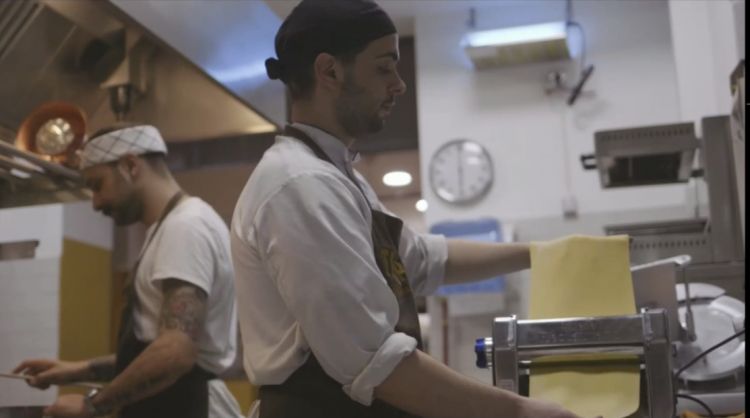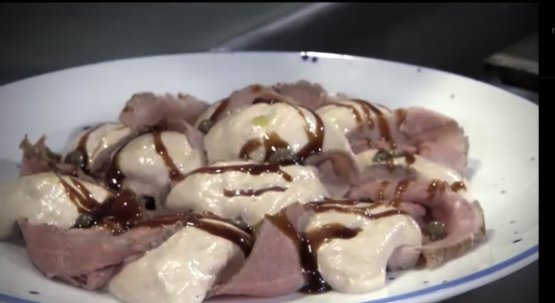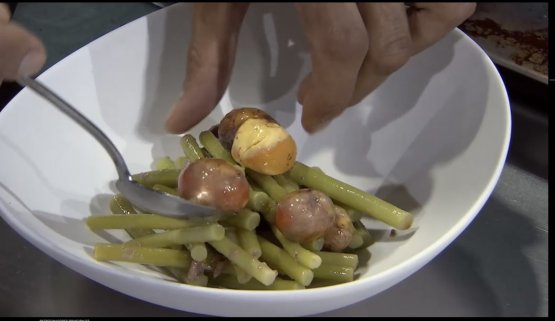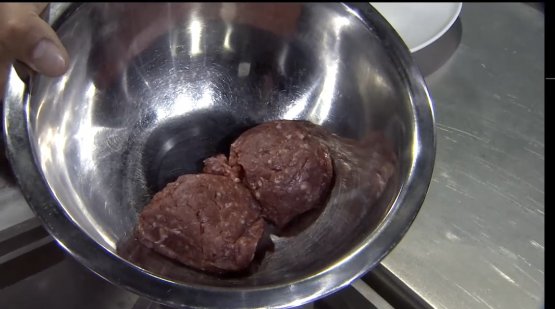Italy arrives at Madrid Fusión, the international gastronomic congress that took place from the 31st of May to the 2nd of June in the Spanish capital. It was represented by two great guys: first, Davide Caranchini, chef at Materia, Cernobbio, who praised modern and creative sustainability (here's the piece by an enthusiastic Niccolò Vecchia). Then it was the turn of Diego Rossi, founder, cook and custodian of lost food at trattoria Trippa and at the new-born Osteria alla Concorrenza.
Three were the dishes presented to discuss circular gastronomy (this was the theme of the congress) and sum up the philosophy of zero-waste and enhancement of all sorts of ingredients, regardless of price, shape, influences. Instead, more space to neat flavours, to irreverence and substance, to using strictly Italian products. A freer cuisine, unconditional, wilder, more aromatic and unusual: affordable but never poor.
Rossi's ouverture is a video that shows scenes of wilderness wrapped in fog, and then the rhythm of the kitchen at Trippa; the freshly caught game is transformed into a dish; effort and lightness, intimacy and touch, fire and pans. Hands that knead and pick, intuition and sensitivity. And then, to finish, every element in the team at Trippa: dining room, kitchen and washing. At the end of the video, Diego is emotional: «I'm touched because we've been closed since October –then he smiles – but we're opening again this Friday».

One of the scenes from the opening video: Diego Rossi in the kitchen at work with his team
Let's start:
trattoria in Italy means large portions, traditional cuisine, moderate prices and laid back atmosphere. And in the case of
Trippa this is a trattoria too. However, there's something different in its raison d'être and it is the main principle behind every dish, from the selection of each product to the attention paid to the staff, that is to say that this is a trattoria
vinculada a la sostenibilidad. Three dishes, we said, but in fact the lessons he gave went far beyond a bullet list of key points. We start with
veal in tuna sauce, an iconic dish at the trattoria in Via Vasari, which the chef is not crazy about, not in its original shape: «Too grey, too bland»
. So he draws from a recipe from his grandmother and he presents it on stage, but only to relaunch it with a version
à la Trippa.

Veal in tuna sauce by Diego Rossi one of the iconic dishes at Trippa
He uses the fiocco cut of veal, a very poor cut, which he doesn't boil, but he cooks at low temperature, to preserve the sweetness of the meat, the tenderness of the fibres and the nutrients. Even the tuna mass is lighter: it's a mousse made with a syphon, a classic mayo with alalunga tuna from Sicily, capers and anchovies. Jus de viande to enhance the aromas of the roast and, following the tradition of his homeland, Veneto, a good pinch of pepper to finish.
The dish has a new structure, an enveloping texture: more body, more volume, and most of all it looks good. So, we get to the first theme: cooks have the task of improving tradition without upturning the original flavours, and Diego Rossi manages to recuperate even cuts that are so undervalued.
Though meat has a dominating role in his kitchen, Diego loves eating vegetables: lots of vegetables and little, but good meat. Wild herbs, fresh vegetables from the kitchen garden find their place in his dishes, and give a fresh touch, balancing the flavours without too much magic, but a genuine approach. This is why the second stage is a borderline vegetarian dish, in his own words.

Bigoli di campo, that is to say talli d'aglio with embryo eggs, lake sardines and cheese from Roccaverano
So what is it? Bigoli from the vegetable garden or the fields, that is to say talli d’aglio that look very much like the Venetian pasta: they are blanched in slightly salted water, before being seasoned with an unusual dose of sapidity. First, the pasta with lake sardines, which is not very common in Italy, where anchovies are most popular. Yet these sardines have the same umami, they are less marine, but are sweeter and the price is lower.
To this he adds a fat component which is not very easy to find: embryo eggs (or ovarian egg yolk), that is to say those eggs that didn't have time to develop the egg white and the shell. Eggs that are only made available after the hen is slaughtered. That's why he says borderline, because one has to wonder: «Would a vegetarian eat these eggs that can only be "extracted" after the hen is slaughtered?» Those who choose to dare will find an egg yolk still soft that dominates over the bigoli with the other animal note, which in this case is from the goat cheese, almost spicy, given by the mature formaggetta di Roccaverano. And then pepper – ça va sans dire.
The sustainability of this dish is in the knowledge, in mastering the anatomy of the animal, which reduces waste in the kitchen and preserves what many would toss in the bin. But sustainability is also the revenge of vegetables, so much so that animal proteins become almost a side dish. This is why affordable cuisine does not feature a depressing lack of flavours, but the optimisation of raw materials that reaches new frontiers of taste.

Sheep tartare in the making. Diego seasons it with brain fried with oil, anchovy colatura and herbs
Last dish, sheep tartare, better if the sheep is old, not too sumptuous: you will choose the leaner parts, with a more delicate flavour, made richer by the fried entrails, in this case brain, with lots of oil, a touch of anchovy colatura and finally a blast of herbs. And if you have a pastry cutter, take it and forget it at the back of a drawer: «Food should not be constrained. Ingredients must be free to express themselves for what they are» Diego points out.
Freedom is also about not being stuck with an unchangeable menu, about leaving the borders of the menu and changing it depending on the market, following nature. This is real sustainability. Lastly, a truly sustainable trattoria is one where you won't work more than 8 hours. Only this way a team can become stronger over time, through a healthy life-work balance: «Because – Diego ends – to work better you must also be able to live».
Translated into English by Slawka G. Scarso